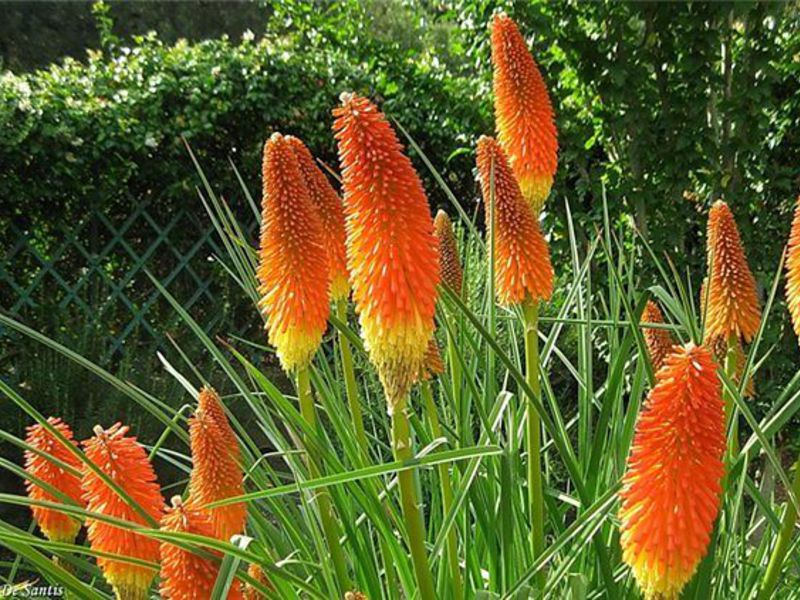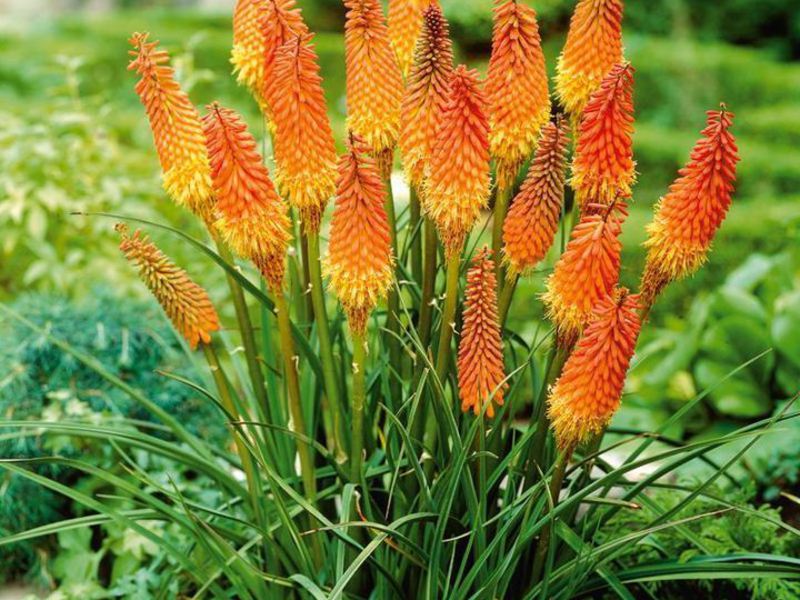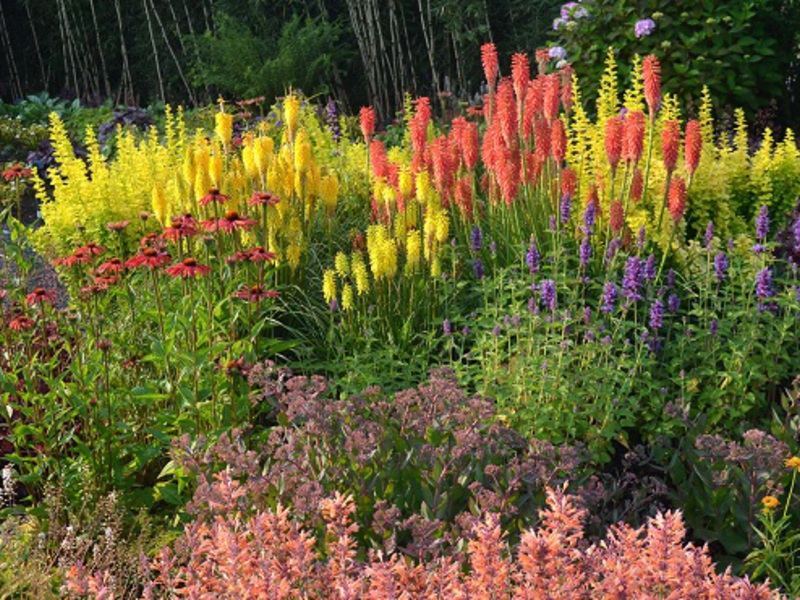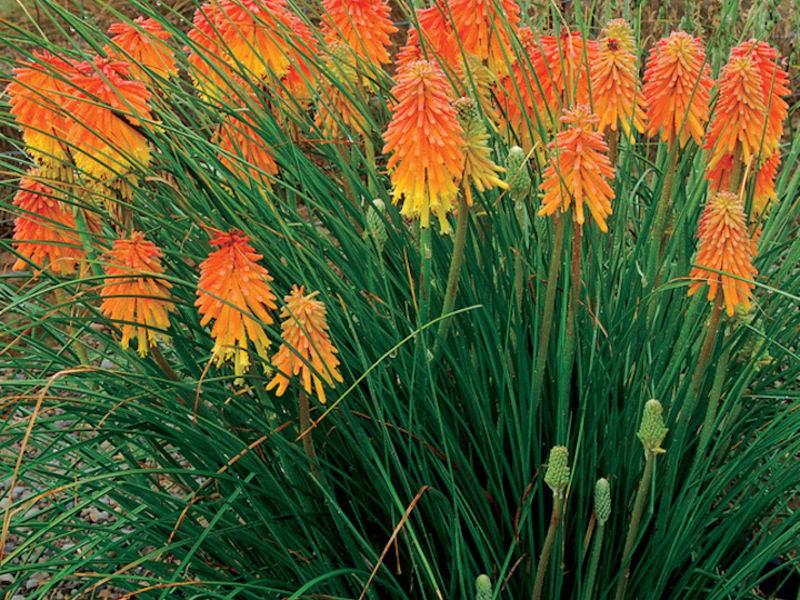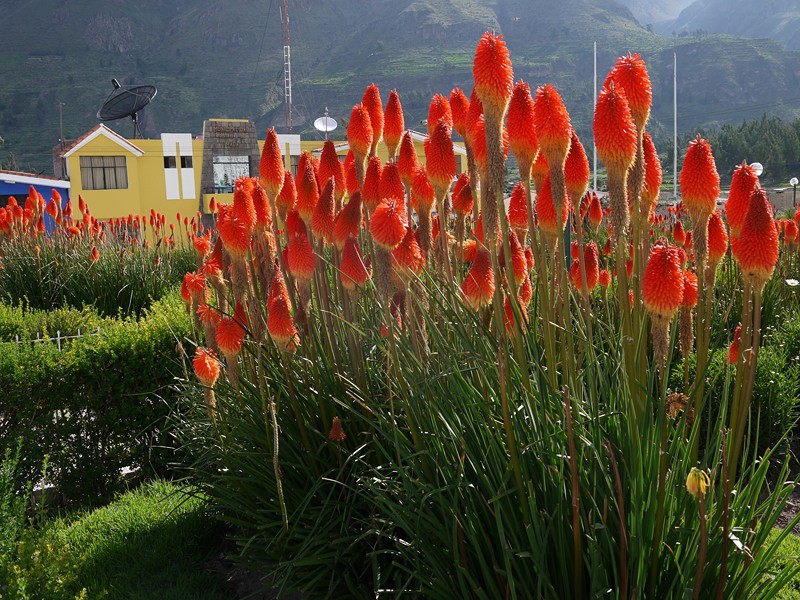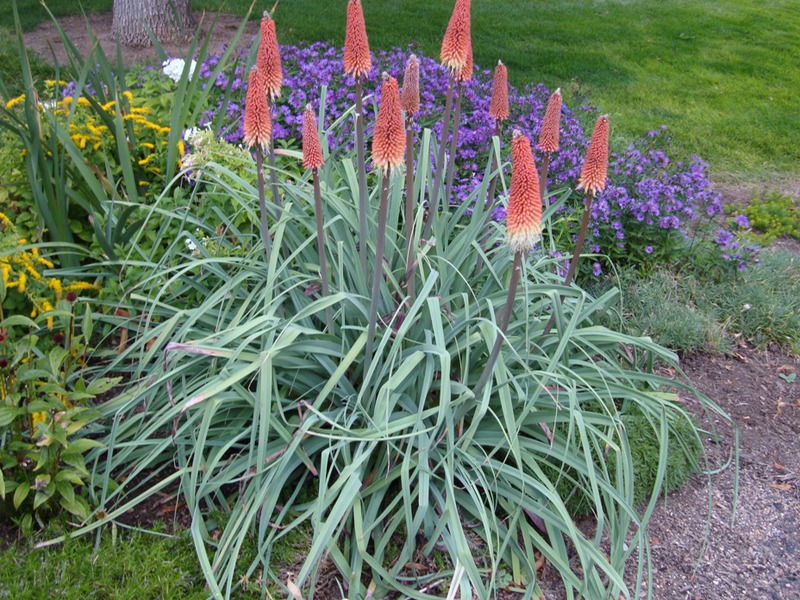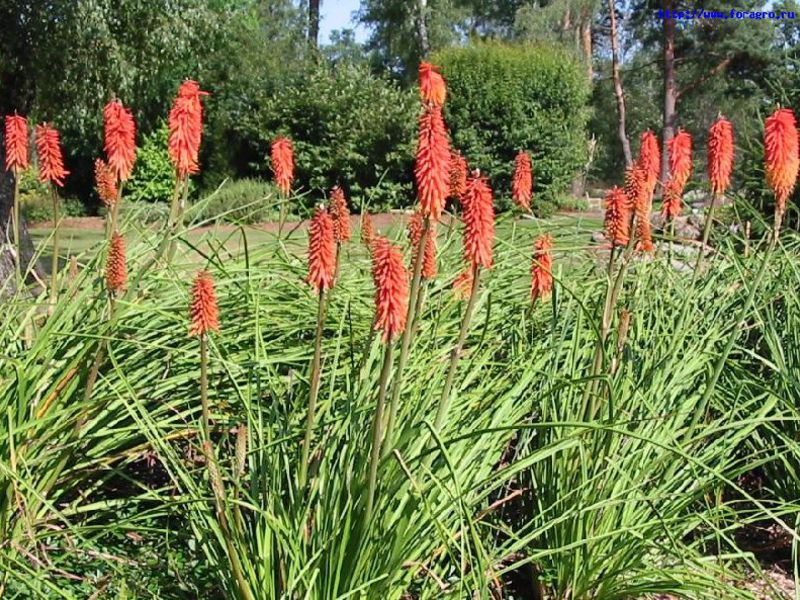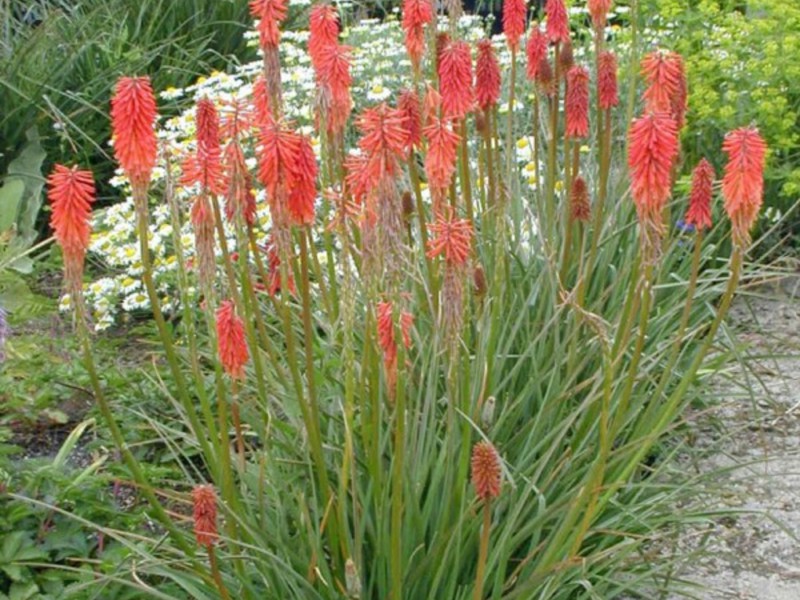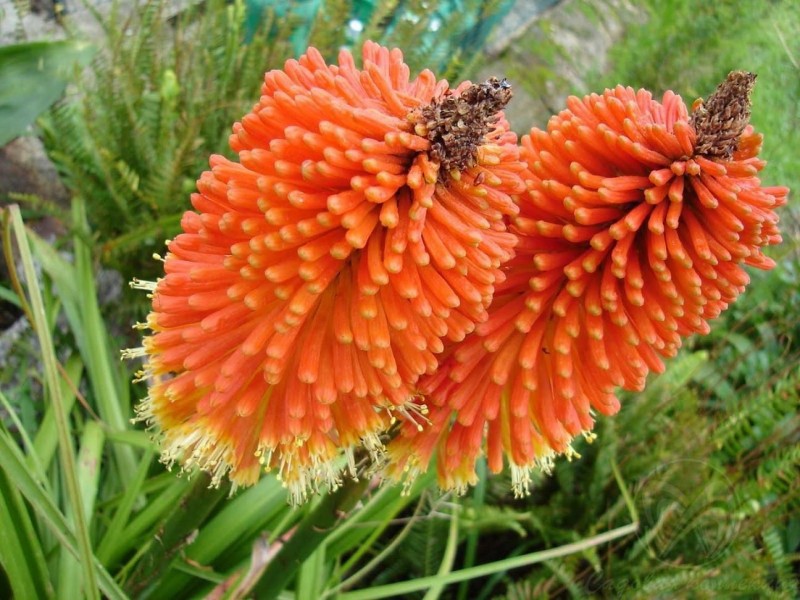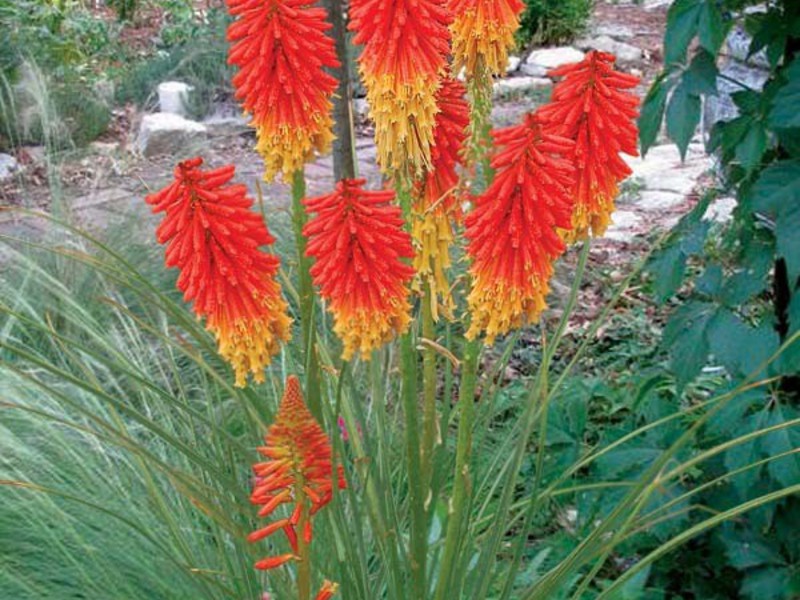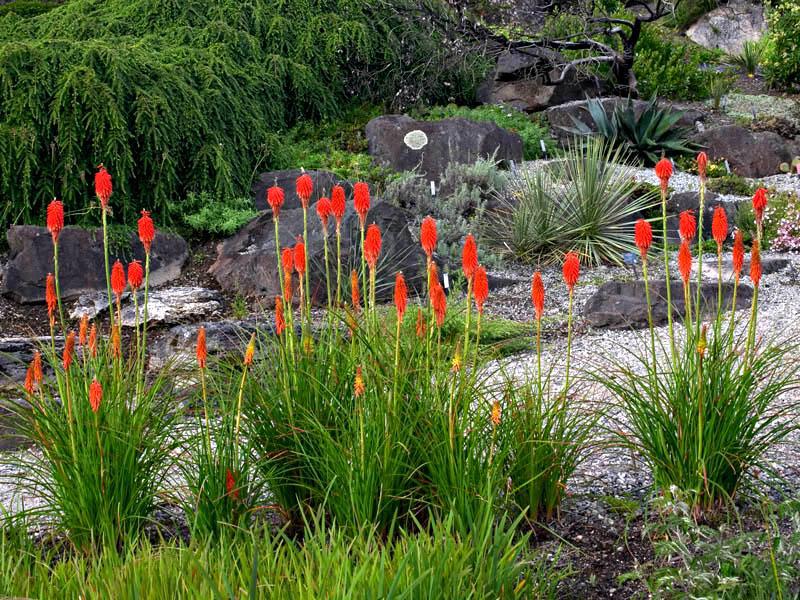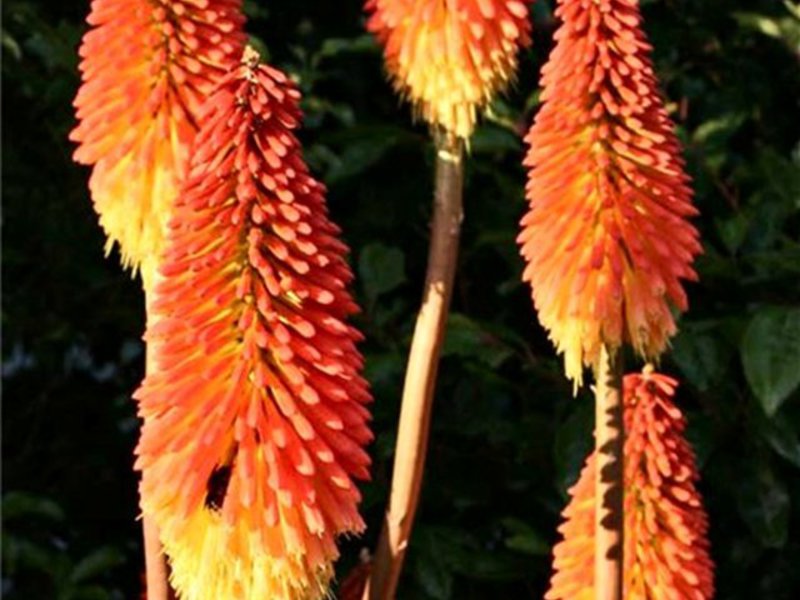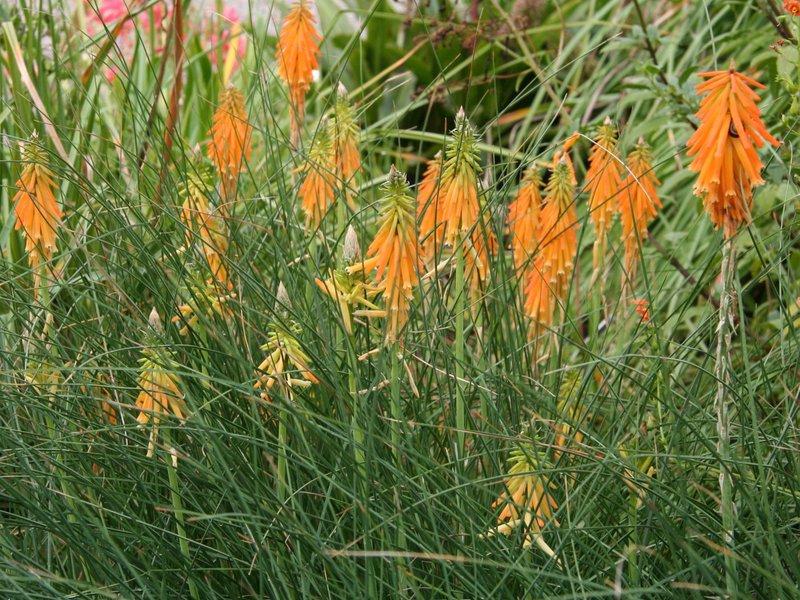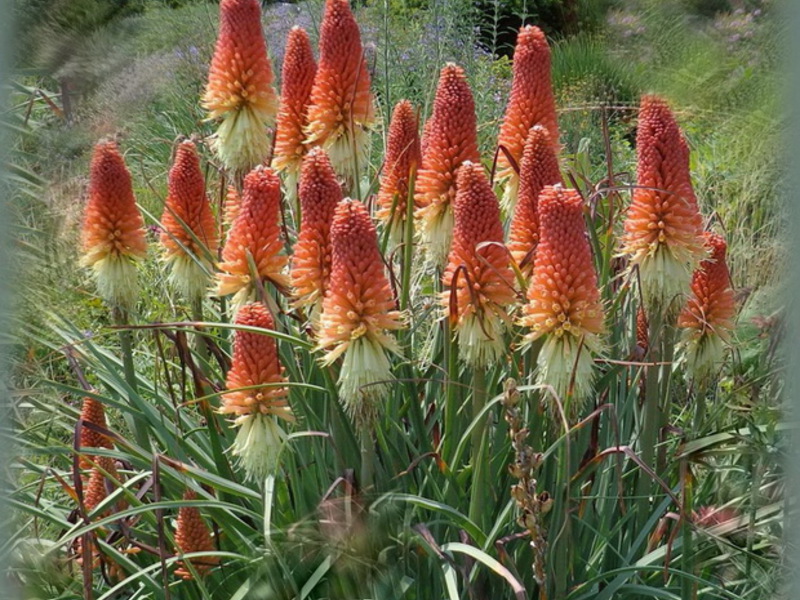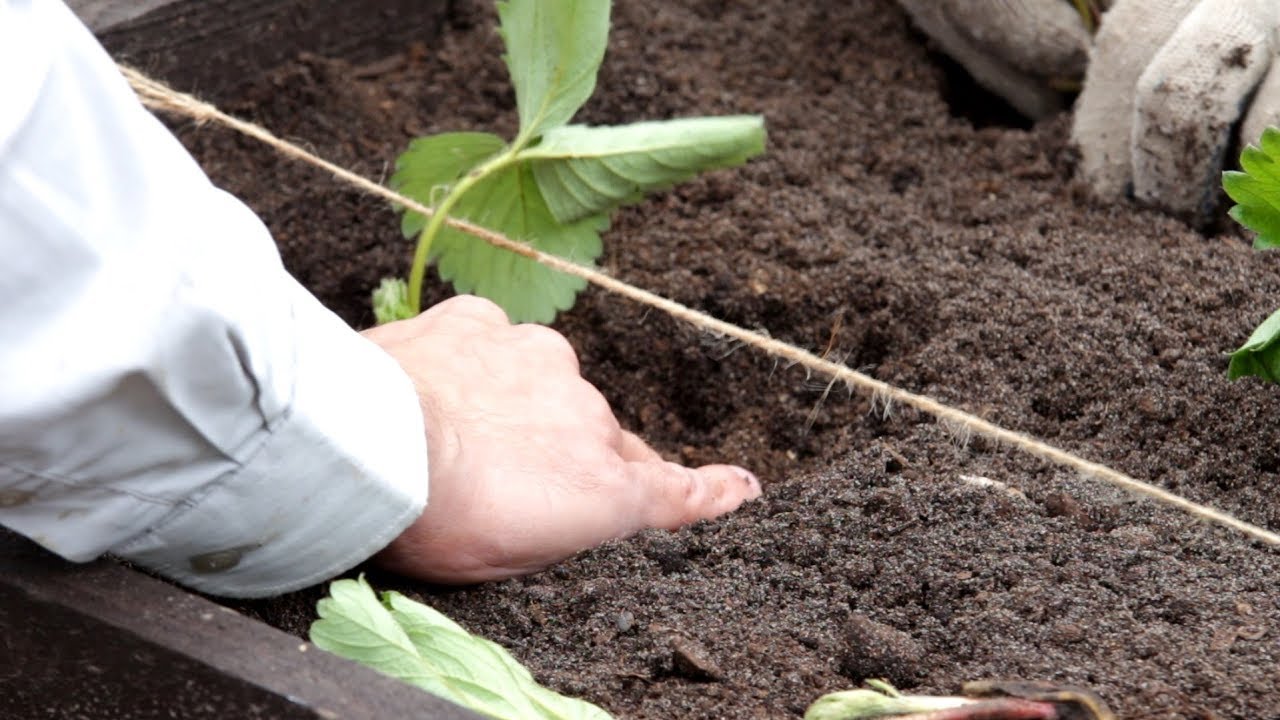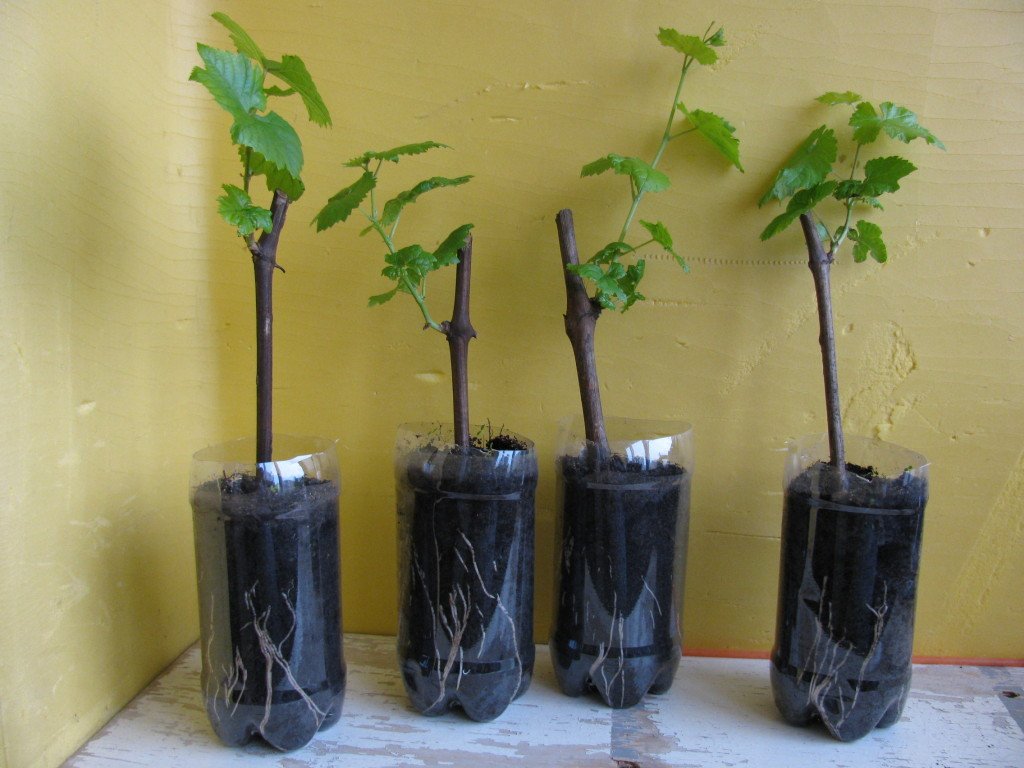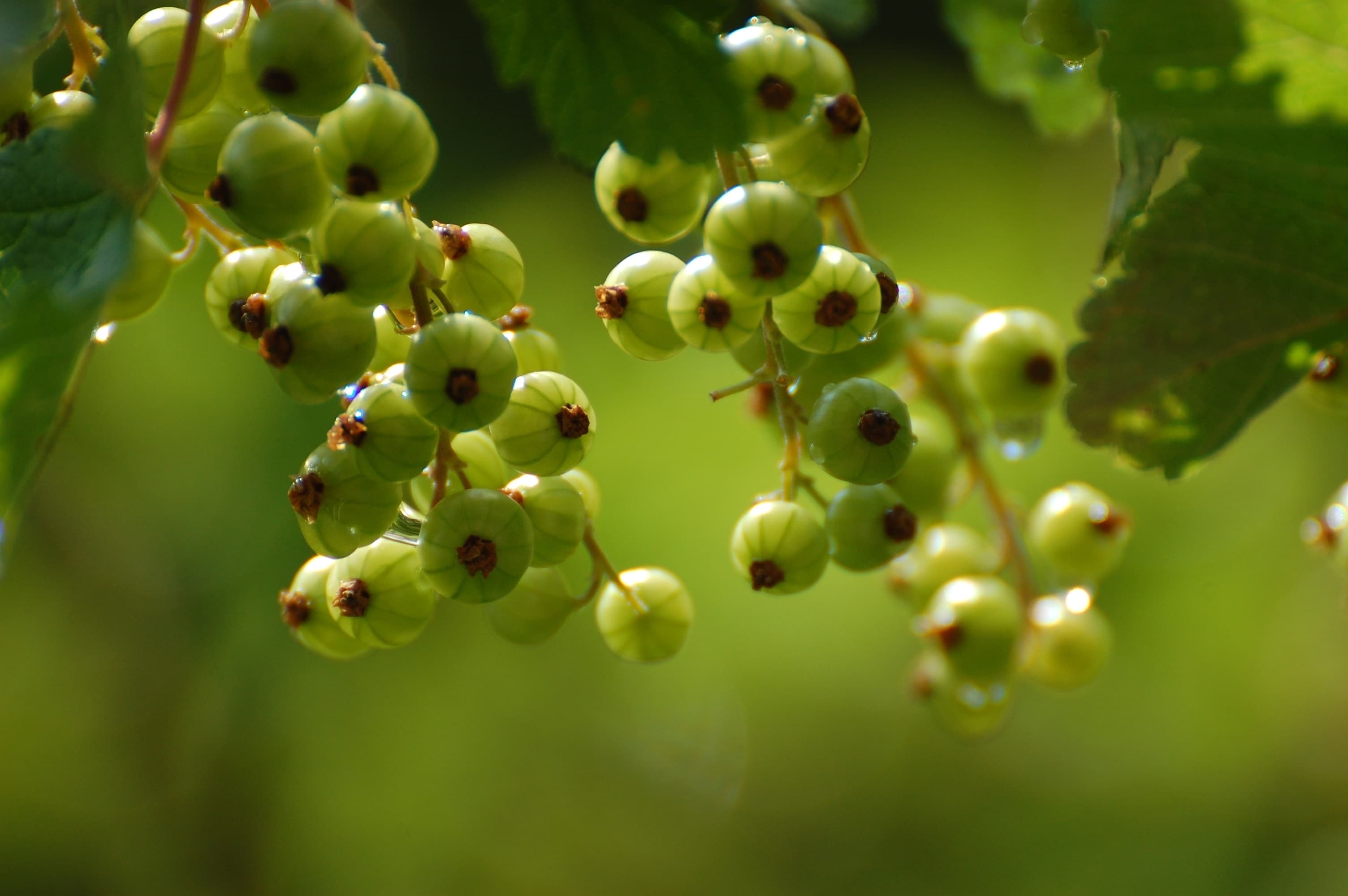Knifofia is a widespread perennial ornamental plant native to Africa. This is a rather unusual plant, from 50 cm to 3 meters high, with a spike-shaped inflorescence of tubular flowers. Flowers periodically change their bright color from red to orange and yellow, which is clearly visible in the photo. Flowering lasts almost all summer - from July to the beginning of frost.
Knifofiya: planting and care in the open field
Despite the fact that the cultivation of plants is recommended mainly for southern regions with warm winters and hot summers, knifofia takes root well in the more northern zone.
Exists about 75 varieties of this flower, which are divided into several main types:
- Tukka is the most frost-resistant variety; it takes root well in Central Russia. Up to 80 cm high, the inflorescence of cniphophia reaches 15 cm, flowering begins in July and lasts more than a month.
- Berry is a tall, hardy plant (up to 2 m), grown in the open field. It has a large inflorescence up to 25 cm, the flowering period is 65 days, it is the most decorative of all species. On its basis, most hybrid varieties have been bred.
- Hybrid - a group of garden plants bred by crossing the berry variety with other species. The height is less than natural (up to 130 cm), the flowers have different shades, all the main qualities of the cniphophia are preserved (the duration of flowering, the size of the inflorescences, etc.).
- Macowena - has a length of 80 cm during flowering, inflorescences reach up to 10 cm.Buds are orange-red, yellow when blooming. It tolerates moisture well.
Reproduction and planting of cniphophia
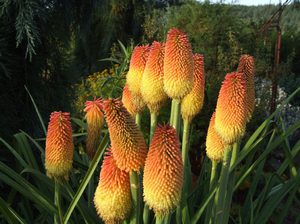 The plant is grown by seeds and vegetatively (by dividing the bush). Seeds are sown in the second half of March - early April in specially prepared boxes or pots. Sowing soil cniphophy should be loose and light, the seeds are evenly distributed over wet soil, without deepening, lightly sprinkling with earth. To speed up sprouting, they are covered with foil and placed in a warm, well-lit place.
The plant is grown by seeds and vegetatively (by dividing the bush). Seeds are sown in the second half of March - early April in specially prepared boxes or pots. Sowing soil cniphophy should be loose and light, the seeds are evenly distributed over wet soil, without deepening, lightly sprinkling with earth. To speed up sprouting, they are covered with foil and placed in a warm, well-lit place.
The seedlings appear in about three weeks, after which the film is removed. After the formation of 2-3 leaves, plants are planted in another place for better acclimatization. The first inflorescences appear only after 2-3 years. At the end of May, the seedlings are planted in open ground. The planting of cniphophia bushes is done at a distance of 20-35 cm from each other.
The division of the bush is carried out in late April - early May. To do this, the bush is first taken out of the box, and then carefully separate the daughter sockets, the slices are dried and sprinkled with charcoal. After a few hours, you can start planting plants for growing in a permanent place. As a result of this procedure, the plant can bloom the next year.
Knifofia is a thermophilic plant and it is quite sensitive to low temperatures, therefore, planting bushes in open ground is carried out after the end of frost (not earlier than mid-June). Loamy soil mixed with sand is best for this. You can prepare a mixture of turf, leafy soil, sand and humus. To prevent water from stagnating near the roots, drainage should be done to ensure good water permeability.
Plants are planted on the sunny side, and since the cniphophy is quite large, there should be enough space between the bushes. The plantings are planted at a distance of 30-40 cm and watered abundantly. For some time, the shoots are shaded from the sun's rays so that they take root better.
Plant care
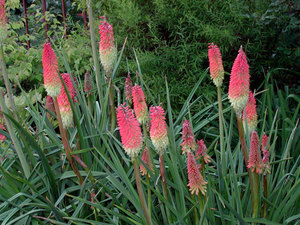 Growing by seeds and vegetatively, caring for plants is not particularly difficult. It is only necessary water regularly, weeding and soil mulching. Watering should be moderate, as excessive moisture negatively affects the plant. However, on sunny days, it is made more abundant.
Growing by seeds and vegetatively, caring for plants is not particularly difficult. It is only necessary water regularly, weeding and soil mulching. Watering should be moderate, as excessive moisture negatively affects the plant. However, on sunny days, it is made more abundant.
For the winter period, the knifofia is prepared in a special way in order to protect it from freezing. After flowering, the flower stalks are cut off from the plants, the leaves are tied into bunches and everything is covered with sawdust, fallen leaves or spruce branches of coniferous trees. The top is additionally covered with roofing material, leaving small ventilation holes to avoid overmaturity.
If the winter is with little snow or too wet, the plants may die from freezing. To be on the safe side, knifofia bushes are transplanted into special containers in which the soil must be periodically moistened... The containers are kept in a dry basement at a temperature of 1-8 degrees. Planting of plants for growing in the open field is carried out only in late May - early June.
If the bushes remain hidden in the ground, then they should be gradually opened to acclimatize to sunlight. It is not recommended to prune the leaves for the winter period, since knifofia is an evergreen plant. Otherwise, it can negatively affect flowering. In the spring, before the start of the season, care for the plants begins, they are examined, dry leaves are removed and healthy ones are cut.
Top dressing and fertilization of knifophytes
Fertilizing is done twice in the entire season. After the appearance of young leaves, fertilizing is carried out with mineral fertilizers containing nitrogen and organic substances. Diluted chicken manure can be used. As an organic fertilizer compost, humus, peat are used... In the second half of summer, after flowering, potash fertilizers or ash are applied, which helps the plants to endure the winter. Dark stones can be placed near the cniphophies, which emit additional heat needed to grow flowers.
Pests and diseases
If the plant receives proper care, regular watering, and feeding with the necessary fertilizers, then it is not susceptible to diseases and feels good. Over-watering can cause root rot.
In this case, the method of treating cniphophia is fungicide treatment. If the plant no longer responds to treatment, then it must be urgently removed, as there is a risk of contamination of other flowers.
Of insects that can harm a plant are aphids, spider mites, thrips... They are destroyed by spraying with an insecticide.
Plant care and growing tips
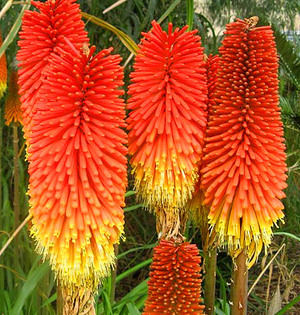 It is better to plant bushes or seeds of cniphophia in an elevated, sunny place; there should be no cold drafts on the site.
It is better to plant bushes or seeds of cniphophia in an elevated, sunny place; there should be no cold drafts on the site.- For better flowering, the plant must be watered regularly and abundantly, it is better to do this in the morning. At the same time, fertilizing with mineral fertilizers is applied.
- Knifofia does not tolerate stagnant moisture and dampness, so the soil must be nutritious, moisture and air permeable.
- It is necessary to check the moisture content of the soil in order to avoid rotting plants, rotted weeds can also be the cause of this, so flower care and regular weeding are needed.
- Seed propagation, division and planting of the cniphophia bush is done every five years.
- If in winter the air temperature drops to -15 degrees, then it is better to transfer the plant to a special room.
Growing and caring for the flowers of knifophytes is not very difficult. For several years, the plants continue to retain their decorative properties. In landscape design, they are often used both in a single form and in combination with other plants... In the photo you can see the compositions of the knifophia in the form of an alpine slide or rockery.
